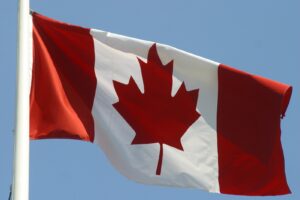Canada’s Ties to the UK Monarchy
Posted by admin_crht on Dec 10, 2020 in Uncategorized | Comments Off on Canada’s Ties to the UK Monarchy
 As the constitutional monarch, Queen Elizabeth II has more of a symbolic role to play and is the personification of authority, unity, and allegiance. Members of the police and armed forces, public servants, ministers, and legislators swear allegiance to the Queen and so do all new citizens of Canada. The monarch is a symbol of national pride and identity and the collective values that individuals cherish.
As the constitutional monarch, Queen Elizabeth II has more of a symbolic role to play and is the personification of authority, unity, and allegiance. Members of the police and armed forces, public servants, ministers, and legislators swear allegiance to the Queen and so do all new citizens of Canada. The monarch is a symbol of national pride and identity and the collective values that individuals cherish.
Queen’s Role as a Head of State
Under the current arrangements, it can be argued that the monarch’s role as a Brain’s Queen is separate from its role as a Canadian Queen. This means that the country has its own constitutional monarchy. Other countries that have similar ties with the British royal family are New Zealand, Jamaica, Australia, Antiqua and Barbuda, and Papua New Guinea to name a few. States with similar arrangements are referred to as a Common Realm.
Roles and Functions of the Monarch
Whether the Queen has any power and functions is a difficult question to answer. Most would agree that the monarch rarely pays visits to Canada and primarily has ceremonial functions. At the same time, many formal powers were left at the discretion of the monarch after independence. The Constitution Act, 1867 states that these powers would be exercised through the provincial Lieutenant Governors and the Governor General. The Governor General of Canada is tasked with withholding consent and vetoing legislation, appointing Senate members, calling new elections, and dissolving the Parliament. He also has the power to dismiss the Prime Minister and the members of Cabinet. Lieutenant Governments have similar functions and powers as they appoint members of the legislature, approve or withhold legislation, and appoint members of Cabinet and the Premier. These powers are largely symbolic, however, as decision-making is mostly in the hands of the Premier and Prime Minister, with the Lieutenant Generals, Governor General, and Queen following advice.
While the monarch only has a symbolic role to play, symbolism is entrenched in the fabric of government and institutions. In Canada’s criminal justice system, the prosecution is called the Crown and the government – Regina. The Prime Minister governs the country on the Queen’s behalf. Canadian laws include reference to Her Majesty wanting or requesting that, which symbolizes delegated powers. The monarch is largely a symbolic figure but as an institution, it is deeply interwoven in society and Canadian culture, traditions, history, and heritage. Experts also point to the fact that abolishing the monarchy would be an expensive venture that requires the consent of all provinces. Canada would also have to replace all military titles, passports, stamps, and money.
Canada’s Divide
Canadian society is divided into republicans and monarchists at the two ends of the spectrum. For republicans, the institution not only has no formal functions but makes the country look like a British colony. Monarchists, on the other hand, argue that the royal family is a positive role model for Canadians while the monarch symbolizes Canada’s unity as a nation. So far monarchists tend to prevail and have an upper hand over republicans but the debate on the role of the monarch has been going on for decades.

Recent Comments